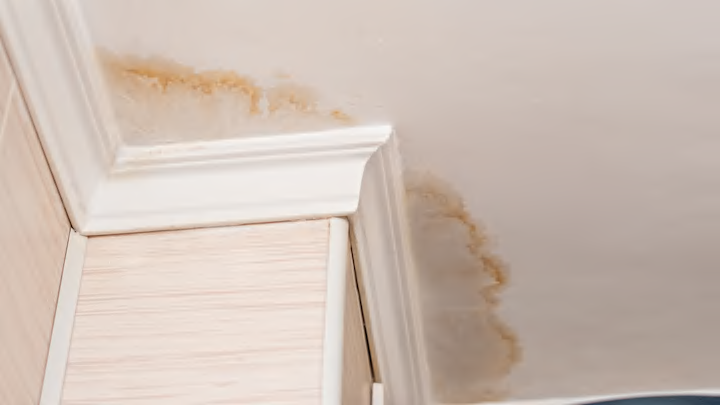One surefire way to disappoint houseguests or prospective home buyers is to have a water stain on your ceiling. These brown, patchy spots from dried mineral deposits are a red flag that water from plumbing or your roof has leaked down. While the problem may be resolved, the stain left behind still needs some attention. Fortunately, there are ways to get rid of them without any major renovations.
One tip from Simplemost is to use the catch-all cleaner, bleach, to attack the stain. A solvent can be made with one cup of bleach and three parts water. (Do not mix bleach with any other chemical or cleaner, as the resulting fumes could be highly dangerous.) Using a spray bottle or sponge, get the solution on the stain, but only after you’ve laid down a drop cloth to catch any drips. Be sure to wipe with clean water.
The purpose of the bleach isn’t to remove the stain, which is likely embedded in the plaster or paint. It’s to kill any mildew and prepare the surface to paint over the blemish. Wait 24 hours and then apply a stain-blocking primer like Kilz, which is designed to prevent built-in stains from bleeding through paint over time. Top that with the color of your choice.
The bad news: It can be difficult to find an exact paint color match, so if you find your newer paint is sticking out, blending in your paint job may involve repainting the entire ceiling.
If the stain led to cracks in the plaster, you’ll need to repair that before painting. Repair kits are easily available at most home improvement stores, and involve scraping away loose material and then using a filler that can be applied like a putty and then smoothed out.
The most important thing when dealing with a water stain is finding what caused it. Before painting, make sure you’ve addressed the source of the leak and made the necessary repairs. Bathrooms, radiators, and damaged roofs are the most likely culprits.
[h/t Simplemost]
